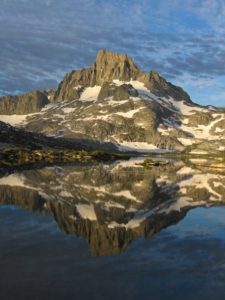I don’t know how much more rejection I can take. Every day for a month the National Park Service has sent me the following email, addressed to William Stith: “We regret to inform you that your application was not selected in today’s wilderness permit lottery.”
Late this summer three backpacking friends –Viking, Iceman and Nine! – and I want to hike the 211-mile John Muir Trail, from Yosemite Valley, through the Sierra Nevada mountains, to Mount Whitney in California, the tallest peak in the lower 48 states.
The problem: a lot of other people also want to hike the JMT, and, like they say, space is limited. You don’t have to win the lottery but you need to win the lottery, which I’ll come to in a minute.
This would be a once-in-a-lifetime kind of hike, beautiful beyond words. Here’s how one JMT veteran described it:

“The John Muir Trail covers some of the most beautiful mountains in the world, from stunning, glacier-chiseled Yosemite, to the jagged spires of the Minarets, to the highest mountain peak in the contiguous United States. You’ll hike over numerous high mountain passes, pass ancient glaciers, cross fast-moving mountain streams while surrounded by giant peaks.”
To see more photos, go here.
And it would fun hiking with the guys I hope to go with, all of whom know what they’re doing. Viking has thru-hiked the Appalachian Trail, 2,189 miles; Iceman has sectioned hiked all of the A.T.; and Nine! has backpacked into the Grand Canyon six times, including two trips down the infamous [as far as I’m concerned] Nankoweap Trail.
The JMT presents one challenge, altitude, that you don’t face on the A.T. and another, resupply problems, you seldom encounter.
The risk of altitude sickness
The altitude ranges from 4,035 feet in Yosemite Valley on the north end to 14,505 feet at Mount Whitney in the south. The first 100 miles is mostly above 9,000 feet and the rest is mostly above 10,000 feet.
By comparison, the highest mountain on the Appalachian Trial, which I hiked end to end in 2015, is 6,643 feet, at Clingmans Dome in North Carolina. Big difference. I’ve also hiked some in the Grand Canyon, the North Kaibab Trail which starts at 8,241 feet and the Nankoweap Trail, which starts at 7,640, but both descend quickly.
Limited Resupply
No roads cross the JMT, although there are nearby resupply opportunities on the first half of the trail. I’ve never carried more than a six-day supply of food, 1.5 pounds per day on section hike of, say, 100 miles or less; 2 pounds a day on the thru-hike. So I’ll have to resupply twice.
OK, so what’s the rejection all about?
Well, to hike the JMT you must have a permit. And your chances of scoring one in the lottery are, in a word, small – two or three percent, or so they say.
Yosemite restricts traffic on the trail to protect it. The daily quota is 45 hikers, and 10 of those permits go to walk-ups.
Here’s the way it works: You submit an application and you’re in the lottery for 21 consecutive days. If your name is not drawn, you submit another application, for another 21 days.
I don’t know what I’ll do if I — if we — win. Jump up and down, I guess. I’ll let you know if and when that happens.
Coming Monday: The Rabbit Doctor